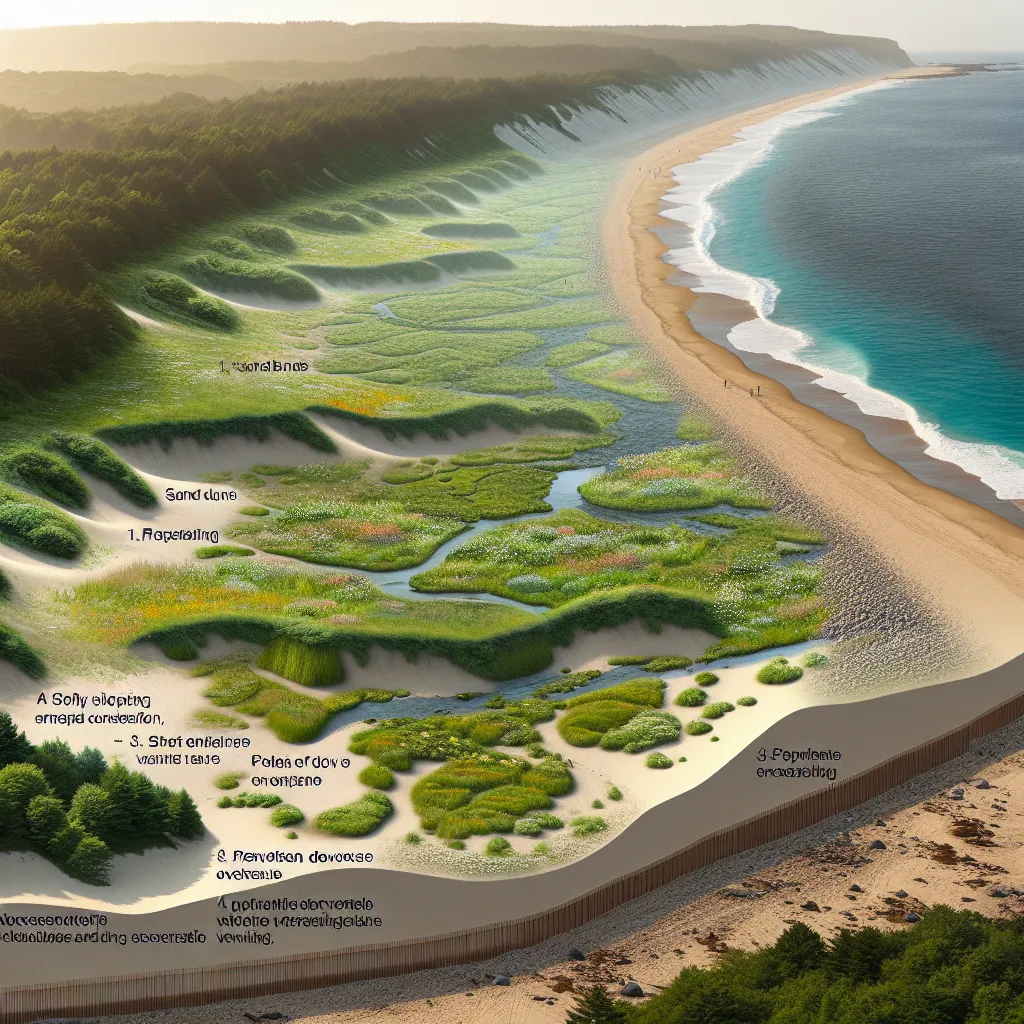Ask AI on The Internet
Question: "soft engineering is the most effective way of protection a coastline" do u agree (6marker)
When evaluating whether soft engineering is the most effective way of protecting a coastline, it's important to consider the benefits and drawbacks alongside the specific context of the coastline in question. Here's a structured approach you could take for a 6-marker answer: 1. **Definition and Overview (1-2 marks):** - Soft engineering involves the use of natural processes and materials to protect coastlines. Common methods include beach nourishment, dune stabilization, and managed retreat. These techniques often aim to work with natural systems rather than against them. 2. **Benefits of Soft Engineering (2-3 marks):** - **Environmentally Friendly:** Soft engineering methods typically have a lower environmental impact than hard engineering techniques like seawalls or groynes. For example, beach nourishment adds sand to eroded beaches, which can provide habitats for wildlife. - **Aesthetic Appeal:** These methods often maintain the natural appearance of the coastline, which can be important for tourism and local enjoyment. - **Sustainability:** Soft engineering solutions can be more sustainable in the long term as they enhance natural processes that help protect the coastline. - **Cost-Effective:** In some cases, soft engineering can be less expensive upfront and over time compared to constructing and maintaining hard infrastructure. 3. **Drawbacks and Challenges (1-2 marks):** - **Short-Term Effectiveness:** Some soft engineering methods may not provide immediate protection during extreme weather events, making them less effective in areas with high erosion rates or severe storm impacts. - **Maintenance Needs:** Techniques like beach nourishment and dune stabilization require ongoing maintenance and replenishment. - **Limited Suitability:** Soft engineering might not be effective for all coastal areas, especially where there is significant human infrastructure close to the shore or extreme sea-level rise. 4. **Contextual Evaluation (1-2 marks):** - The effectiveness of soft engineering depends heavily on the specific coastline's characteristics. For example, in areas with low to moderate wave energy and lower erosion rates, soft engineering might be highly effective. In contrast, in high-energy environments or where immediate and significant protection is needed, hard engineering might be more appropriate. - Consider the socio-economic context as well. In regions that rely heavily on coastal tourism, the aesthetic and environmental benefits of soft engineering might make it the preferred choice. 5. **Conclusion (1 mark):** - Summarize by weighing the pros and cons. State that soft engineering can be the most effective method in certain contexts but not universally so. The best approach often involves a blend of both soft and hard engineering methods tailored to the specific needs and characteristics of the coastline. Example Conclusion: "Soft engineering can be an effective and sustainable way to protect coastlines, particularly in areas with lower erosion rates and where maintaining natural coastal aesthetics is important. However, its effectiveness is context-dependent and may not always provide sufficient protection in high-energy environments or where there is immediate risk to human infrastructure. Therefore, a combination of soft and hard engineering approaches is typically the most comprehensive strategy for coastal protection." Feel free to adapt this structure and content based on your specific arguments and evidence.
Think your answer is better than the AI's? Post it below.
Other Most Relevant Posts:
 "Shielding the Shores: Evaluating Coastal Adaptation Strategies in the Face of Climate Change with Evidence-Based Approaches"
"Shielding the Shores: Evaluating Coastal Adaptation Strategies in the Face of Climate Change with Evidence-Based Approaches"
 Protecting Africa's Coastal Cities: Harnessing Ecosystem-Based Approaches and Climate-Resilient Infrastructure
Protecting Africa's Coastal Cities: Harnessing Ecosystem-Based Approaches and Climate-Resilient Infrastructure
 Preserving the Past while Embracing the Future: Finding the Balance Between Cultural Heritage and Development Efforts
Preserving the Past while Embracing the Future: Finding the Balance Between Cultural Heritage and Development Efforts
Question Tags
If you want your question answered by an AI, click here.




Post your own comment: